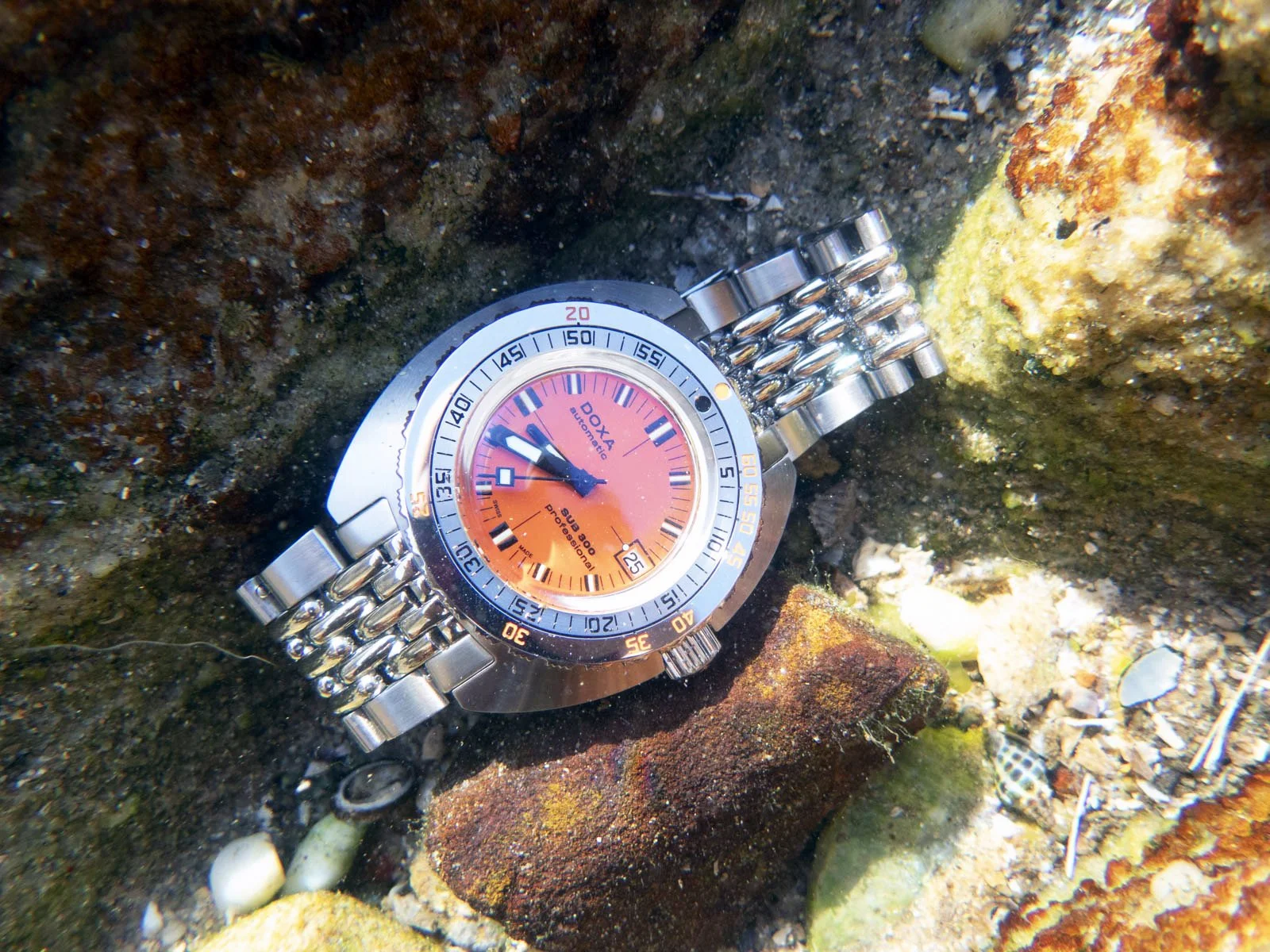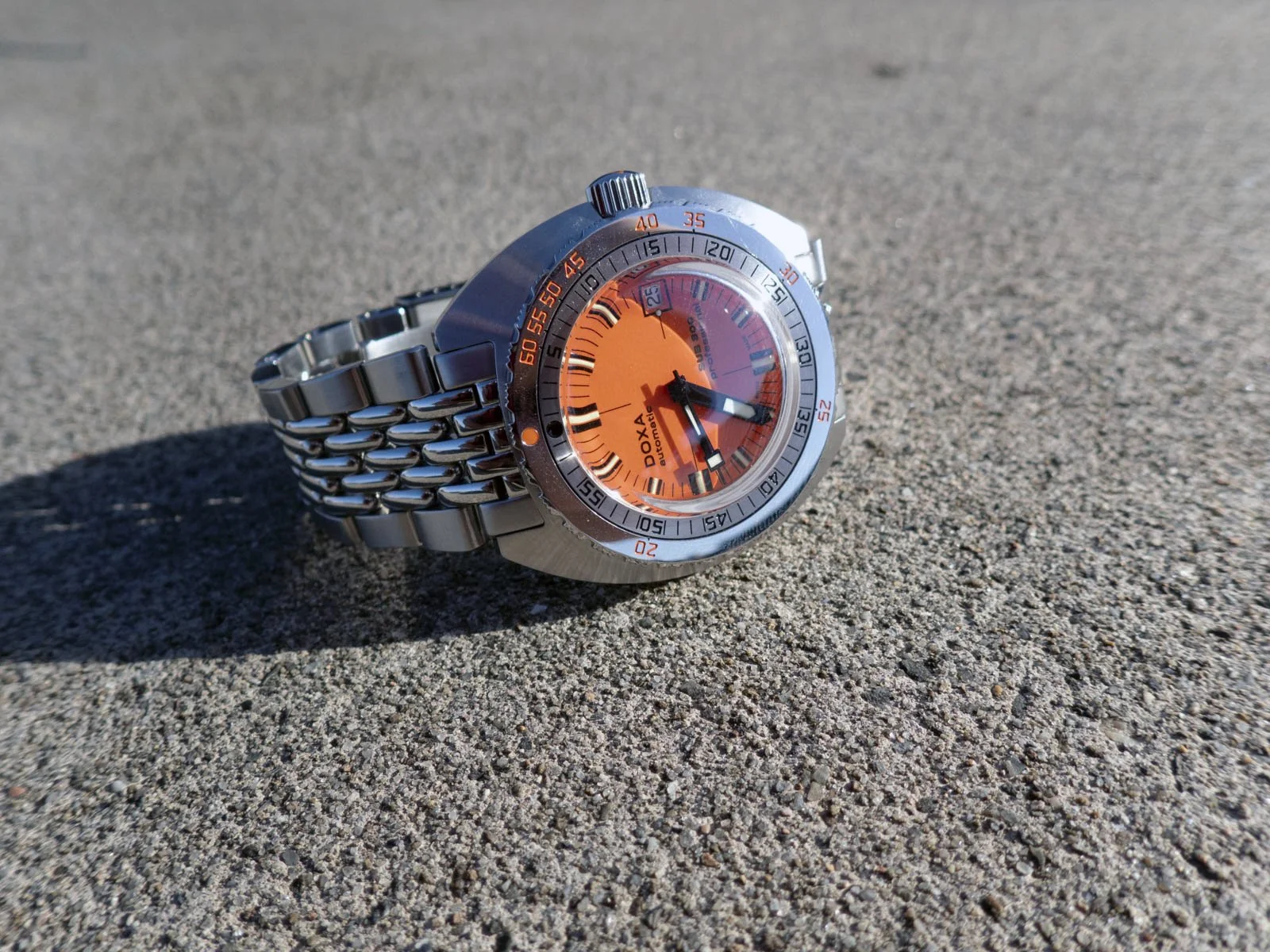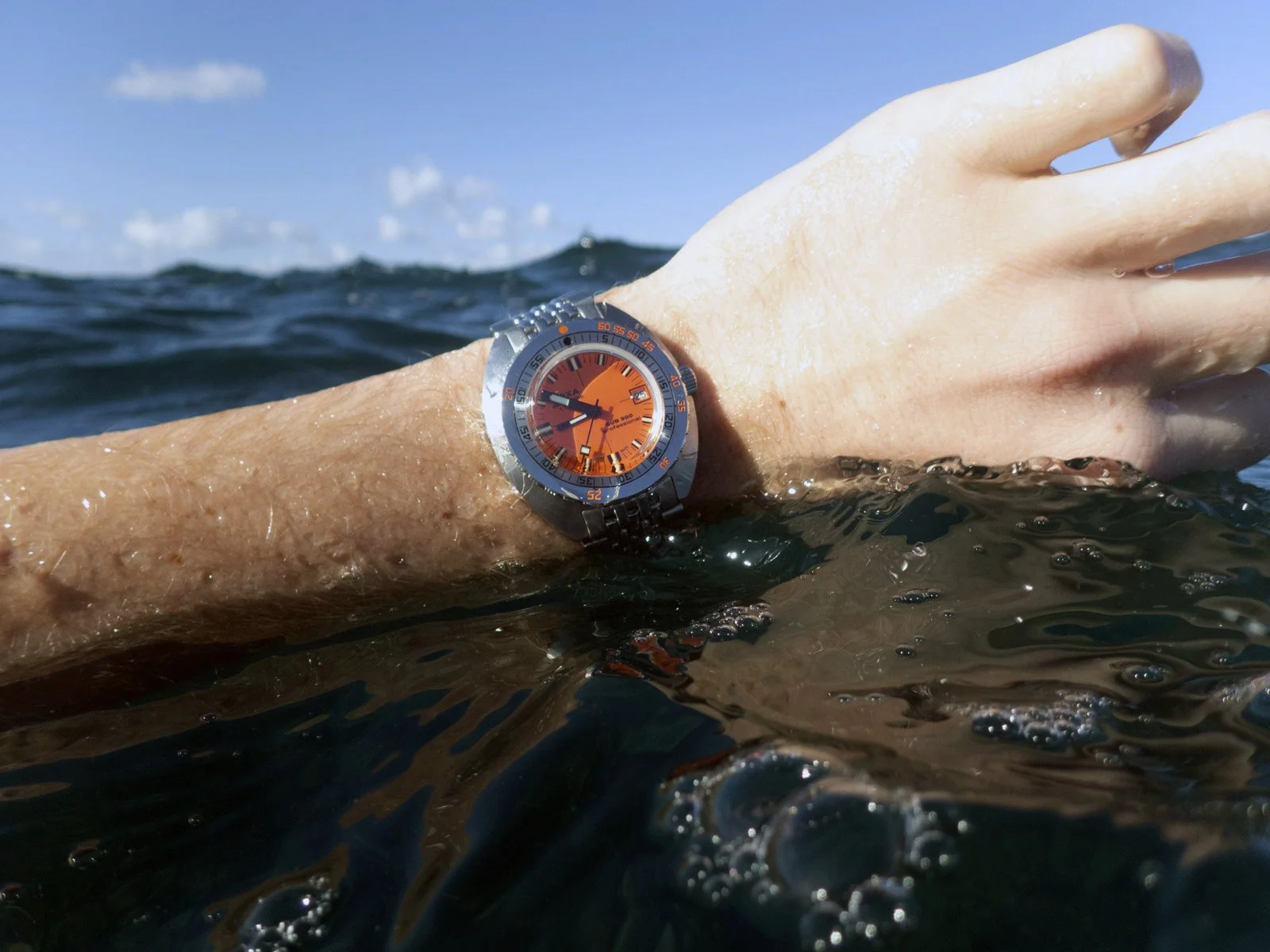The Doxa Sub300 Swims With The Big Fish
There are dive watches, then there are watches for divers
Pedigree goes a long way in the watch world, yet few watches carry pedigree quite like the Doxa Sub 300. A purpose built, no-nonsense dive watch, the Doxa was so ubiquitous with those living an aquatic life it was essentially considered “standard issue” for divers, oceanographers, sailors and surfers. Whilst Doxa succumbed to the quartz crisis, this 135-year-old watch brand has risen from the ashes under modern stewardship and revived this titan of tool watches for the modern age. Whether you’re hanging out on the waitlist for a Rolex Submariner or you’re a battle-hardened collector, here’s why this clever diver is worthy of time on your wrist.
As diving technology exploded in the mid-20th century new inventions like the Aqualung allowed us to explore more of our undersea world, seeing commercial and recreational diving emerge as the next forefront of exploration. In the early to mid 1950’s, four brands were duking it out to be the watch of choice for those taking to the depths: the Rolex Submariner, the Omega Seamaster 300, the Blancpain Fifty-Fathoms and the Zodiac Sea Wolf. All round cased, black dial watches with a rotating timing bezel and luminous dial and hands, a uniform template across the range.
Arriving a little later to the party in 1967, Doxa’s approach completely changed the game, setting out to create the perfect tool for divers, working with commercial divers to develop a watch that solved many of the problems they faced with the crop of dive watches on the market. This approach resulted in a watch wholly unique to Doxa, defined by a series of clever features that form the Doxa design language:
An enlarged minute hand and diminutive hour hand, because when you’re diving hours don’t matter whilst minutes are vital.
A saw-tooth bezel for improved grip with gloves, plus a no-decompression scale engraved on the bezel for timing how long they could stay at different depths without needing to decompress and avoid the bends.
A first-of-its-kind spring loaded and ratcheting clasp to allow the watch to be worn over a wetsuit without needing to resize the bracelet.
It’s ‘form follows function’ yet the form was beautiful.
Jacques Cousteau diving with a Doxa Sub 300 Shartkhunter
Royal Navy Lieutenant Cyril Lafferty training for SEALAB 3 in 1968, on wrist a Doxa Sub 300
Doxa also experimented with brightly coloured dials, landing on their signature orange seen on the ‘Professional’ models as in testing they discovered orange was the last colour on the light spectrum to disappear as a diver descended underwater into the dark. Alongside the Professional, Doxa also offered the Sub 300 with three additional colours: Yellow (Divingstar), Silver (Searambler) and Black (Sharkhunter).
Upon its creation in 1967, the Sub 300 was retailed in dive stores, not jewellers like their Rolex and Omega counterparts, which was a big factor in them getting on the wrist of people with the Right Stuff, people like the last man on the Moon, Gene Cernan, who wore a Sub 200 T. Graph, the rare chronograph variant of the Sub 300 (which he’s also rumoured to have taken with him on Apollo 17).
With its no-nonsense rugged appeal, the Sub 300 quickly earned two famous friends in its corner, one real and one fictional: world-famous oceanographer and filmmaker Jacques Cousteau and the main character of the Clive Cussler adventure novels, Dirk Pitt (not to mention on the wrist of author, Clive Cussler, himself). Cousteau found himself so enamoured by the charm of the Sub 300 he negotiated exclusive destitution of the watches, also placing them on the wrists of those in the Calypso dive team on their expeditions making their famous diving films and bagging Oscar’s along the way.
With such historical pedigree it’s no surprise the Sub 300 has made a return, with the first true reissues landing back on divers wrists for the 50th anniversary in 2016, Doxa releasing subsequent follow-ups refining the watch to match the original thin-case of the first releases in 1967.
Doxa have added a lineage of new dial colours in addition to the historical colours, in addition we’re now offered a teal blue, a dark blue and my personal favourite, the stark white ‘Whitepearl’ dial.
With a case measuring in at 42.5mm there’s no getting away from the fact the Sub 300 is a sizeable watch, yet it’s genius lies in how the thin, flat case hugs the wrist. The illusion of such a small dial and such a large case makes the Sub 300 wear smaller than it’s dimensions would lead you to believe, allowing it to adapt to fit most wrists.
The choice of a variety of dial colours to suit every preference unfortunately comes as a double-edged sword if, like me, fauxtina is a dealbreaker. Fauxtina, or faux-patina, is lume that’s intentionally discoloured to a creamy white to replicate the ageing of luminous material seen on vintage watches. It’s often seen on the dials and hands of throwback watch designs and vintage reissues, and unfortunately Doxa’s orange, silver and black dials and handset all feature aged lume, only the yellow Divingstar the lone heritage colour spared the treatment. Thankfully, the white Whitepearl’s monochrome dial feature stark white lume, which makes it my personal choice of the range.
An equally important aspect of the iconic Doxa design is the beads of rice bracelet present on Doxa Sub’s going back to its birth, which has been significantly beefed up from the delicate vintage bracelets. The bracelet certainly looks the part and is excellently finished, though when we get to the clasp it all goes downhill. In the highly competitive sub-$4,000 watch category we’re seeing brands like Oris and Zodiac significantly improve the quality of their bracelets, so to see a clasp and divers extension on equal quality with that of a Seiko SKX bracelet is a real disappointment, especially when the bracelet itself comes with a price tag of $450 AUD. I do hope we see Doxa come to their senses and improve the quality of the clasp, and if we’re devising a wish list some tapering wouldn’t go astray. It’s a shame the clasp quality lets down what is otherwise an excellent bracelet.
At the end of the day I’m nit-picking, the bracelets pitfalls are far from an overall dealbreaker for the Sub 300, put it on wrist and jump into the ocean and any concerns are washed away and a brilliant, brilliant dive watch shines through. If you find the bracelet’s faults truly insurmountable, luckily the Sub 300 is the definition of a strap monster, wearing excellently on a multitude of rubber straps and nato’s, and that’s without even mentioning the optional OEM integrated rubber strap in matching dial colours, which thankfully also features a hugely improved clasp over the bracelet. Is Doxa’s rubber strap the solution to the bracelet problem I’m facing? Considering how a strap significantly accentuates the wonderful case even further than the bracelet, maybe so.
I have a theory that you either love or hate the Doxa Sub 300. If, like me, you love it then a lot of that’s down to the romantic notion of diving’s heyday, a time when it was dangerous and men and women were putting their lives on the line and Doxa’s on their wrists. Arguably, the Doxa played a bigger part in the culture of diving than any other watch. The modern Doxa Sub 300 has captured this romance by sticking to its guns and not watering down any of the watches striking qualities to appeal to broader tastes. It’s unapologetic in its purpose which brings an authenticity rarely seen from other watches. If you’re in the market for a dive watch with actual heritage, try a Doxa Sub 300 on for size.












